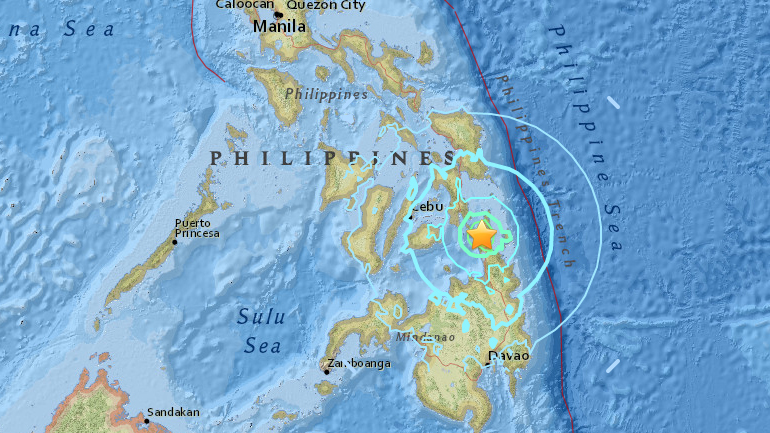Hello, my name is Edson. A strong earthquake (magnitude= 6.7) recently hit Surigao, Philippines. There was 6 deaths and over a 100 were injured. So today I’m here to help. I will do a Q & A on the basic and most common questions that people ask during and after an earthquake. So, without further ado, let’s start the Q & A !
- Why did the earthquake occur in Surigao City ?

Eastern Mindanao, including Surigao del Norte, is one of the seismically active areas in the country because of the Philippine Fault and Philippine Trench, which are the main earthquake generators that can affect the area. In addition to that, there are local faults which can be sources of small to large magnitude earthquakes.
2. What type of fault can occur during the earthquakes ?
A strike-slip fault is likely to occur. This is an image of a strike-slip fault.
.
3. Has there been a previous earthquake prior to the one right now ? When?
Yes, there was one earthquake that was even stronger than the one on Feb. 10. It was on July 1, 1879. It had a magnitude of 7.4 and was generated by the movement of the Surigao segment of the Philippine Fault and was considered as the largest historical earthquake in the area. During this event, strong ground-shaking was felt in Surigao del Norte and caused significant damage to churches, buildings, and roads.
4 . What can we expect from the current earthquake activity ?

With the data we have, I can surely say that the earthquake on February 10 was the main shock and any succeeding small-magnitude earthquakes are considered as aftershocks. Aftershocks will likely occur for the next few weeks, some of which may even be felt.
5 . What are the other hazards that we should be aware of ?
Landslides, rock falls, and other types of mass movements may happen in mountainous or hilly areas. Liquefaction, manifested by sand boils or lateral spread may affect low-lying, water logged, sandy areas at the river banks. Tsunami is not expected from the kind of movement of the Philippine Fault – Surigao segment. The tsunami threat for Surigao del Norte would come from the movement of the Philippine Trench, located east of the province.
6. What should the affected communities do ?
People are reminded to be cautious of structures visibly weakened or with signs of damage by the 10 February 2017, as these could be further damaged by aftershocks. Engineers from the local government, other agencies and organizations should inspect buildings and other infrastructures to determine their integrity, and recommend appropriate actions to concerned affected groups or individuals. Slopes should be checked for tension cracks that may have resulted from the strong ground shaking. Tension cracks may make slopes more susceptible to landslides. These areas should be avoided.
The best course of action is preparedness. In case of another felt earthquake, it is recommended that people protect themselves by doing the “duck, cover and hold”. In homes and offices, heavy furniture should be strapped to the walls, and appliances be secured to prevent them from toppling and causing injuries to persons.
That’s all I have to offer and I hope you learned a thing or two. And a special thank you to PhiVolcs, it’s the site where I got most of my research . Honestly, I had a blast doing this and I can’t wait to do more soon. Until next time………….. Farewell
